|
|
THE BIRCHES
Paper Birch, Yellow
Birch, Ironwood, and Musclewood
Betulaceae, The Birch Family
 The
birches form a family with 6 genera
and about 100 species that occur mostly throughout the cooler northern climates.
Most are shrubs. In the U.P. there are four tree-sized species. They all have simple leaves with saw-toothed margins. Family members frequently bear
male catkins which form in the fall
and flower in the spring. Female catkins form in the spring. The two birches
have small samaras shaped like
turkey feet that fall from papery cones. Ironwood and musclewood have unique fruits.
The
birches form a family with 6 genera
and about 100 species that occur mostly throughout the cooler northern climates.
Most are shrubs. In the U.P. there are four tree-sized species. They all have simple leaves with saw-toothed margins. Family members frequently bear
male catkins which form in the fall
and flower in the spring. Female catkins form in the spring. The two birches
have small samaras shaped like
turkey feet that fall from papery cones. Ironwood and musclewood have unique fruits.
 PAPER BIRCH (Betula
papyrifera)
PAPER BIRCH (Betula
papyrifera)
Other Names:
White Birch, Canoe Birch, or Silver Birch
Key ID Features: Bark, Leaves, Fruit
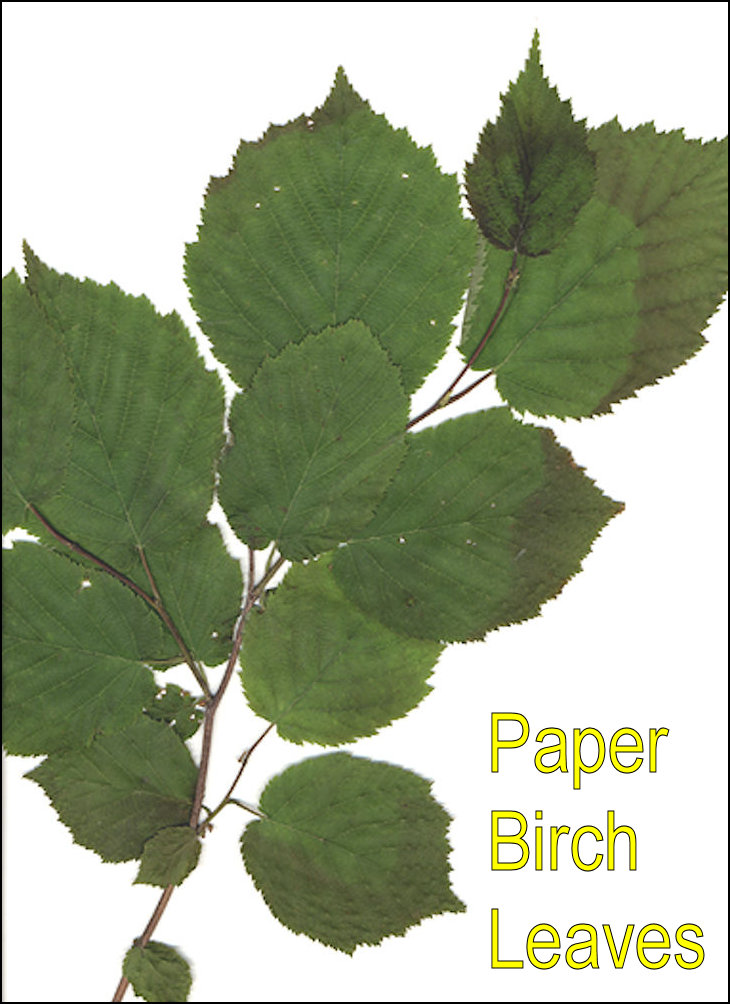
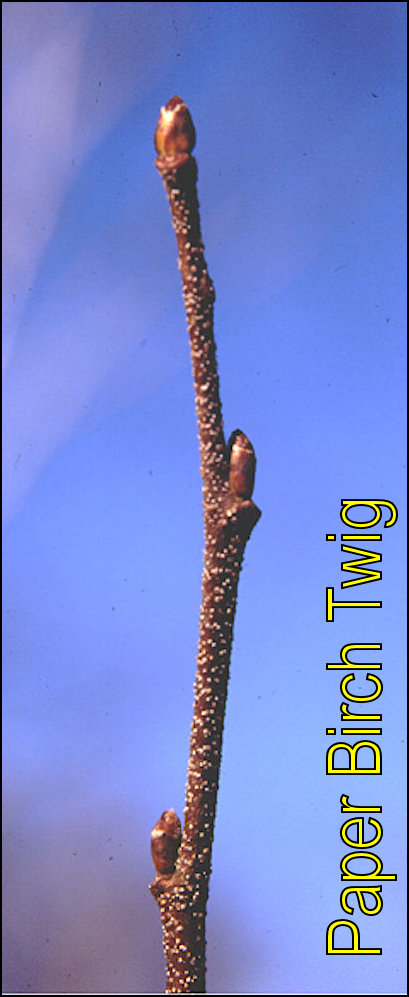
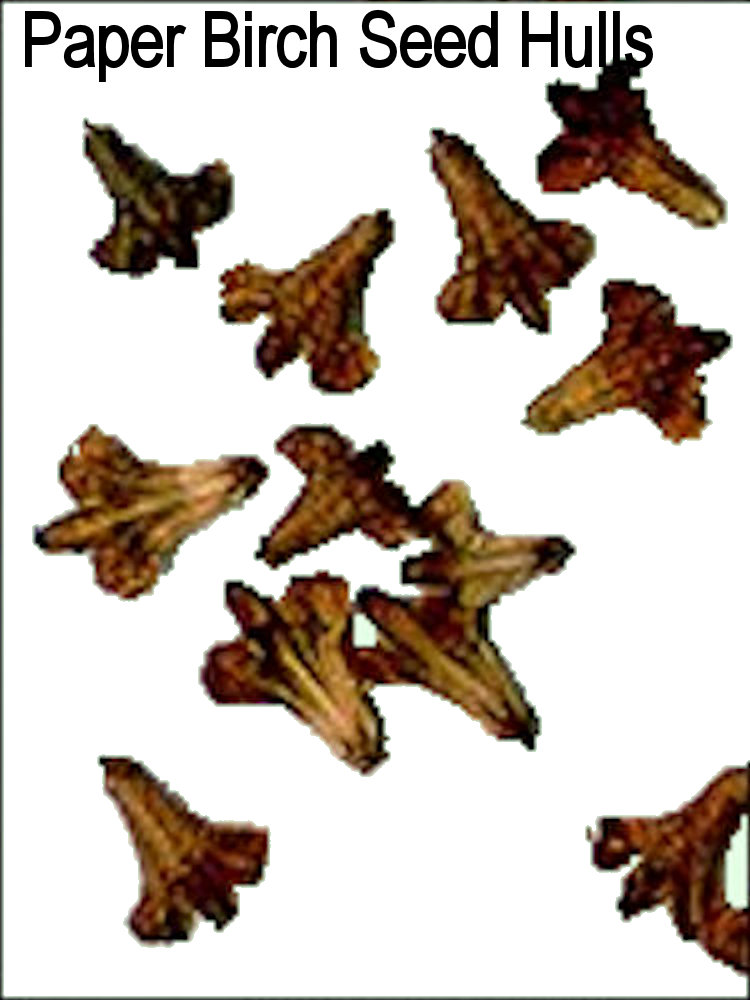
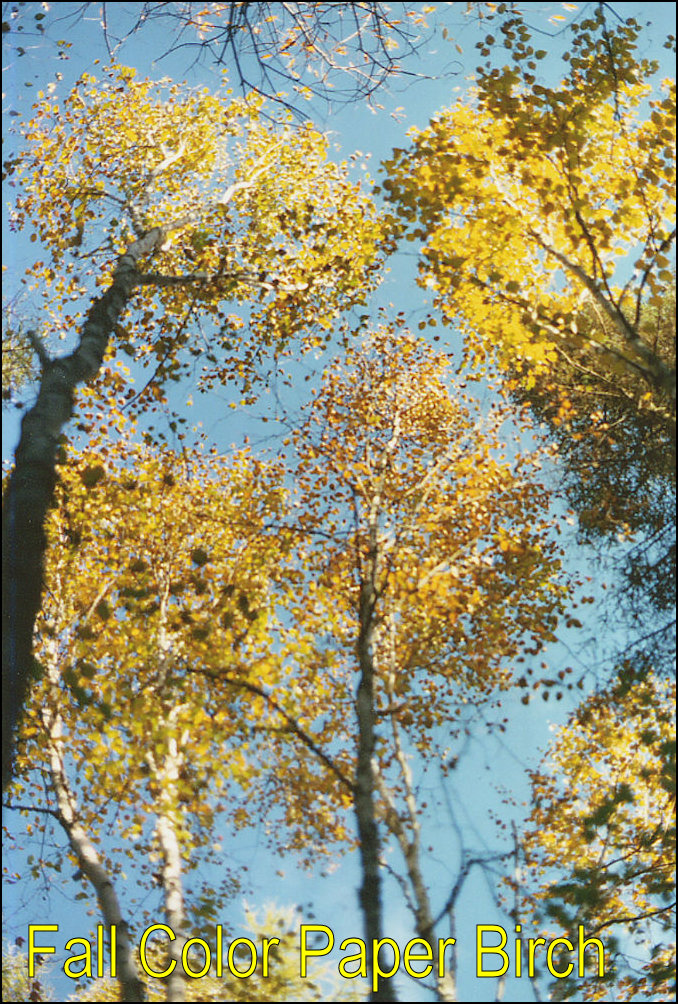
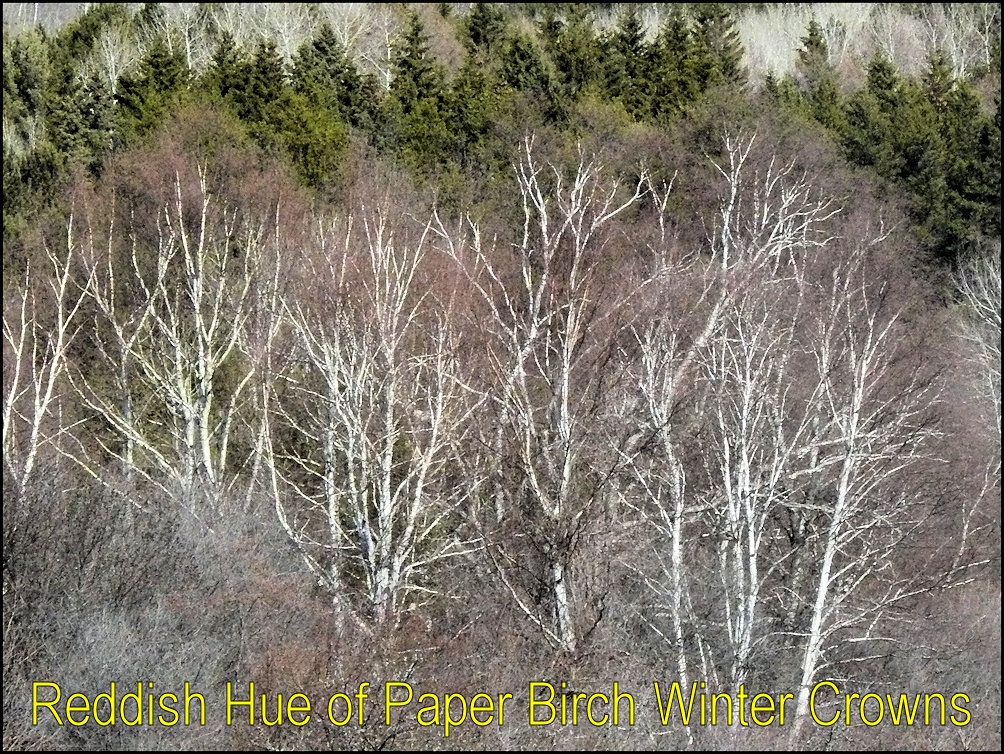
The bright
white, peeling BARK of paper birch make this tree one of the easiest in the
northwoods to identify. The only tree commonly mistaken for paper birch
is quaking aspen, which sometimes has snow white, smooth BARK but it does not
peel. Paper birch LEAVES are 2-3 inches long and have a rounded leaf
base. Leaf margins are serrated
or double-serrated. The
fine TWIGS are purplish with many small white spots called lenticles. This purplish cast
and fine twig pattern can be seen in the CROWNS from a distance away, distinguishing
it from aspen. Male catkins
are about an inch long, The small SEEDS, or samaras,
(seed coats in image) are about 1/8 of an inch long. They look like tiny
turkey feet and can often be found atop the snow throughout the winter.
Paper birch is a sun-loving, short-lived tree that, historically, pioneered
recently burned areas. Fire suppression, old age, and an inability to
reproduce in the shade have contributed to a dramatic decline of this
popular tree. Often growing in PURE STANDS, paper birch can also be ASSOCIATED
with upland hardwoods, balsam fir, and swamp forest types. Common pests: gypsy moth, large aspen tortrix, leafminers, skeletonizers, tussock moths, bronze birch borer, drought, old age.
 YELLOW BIRCH (Betula alleghaniensis)
YELLOW BIRCH (Betula alleghaniensis)
Other Names:
Gray Birch, Swamp Birch, or Sweet Birch
Key ID Features: Bark, Twig Taste, Habitat, Leaves
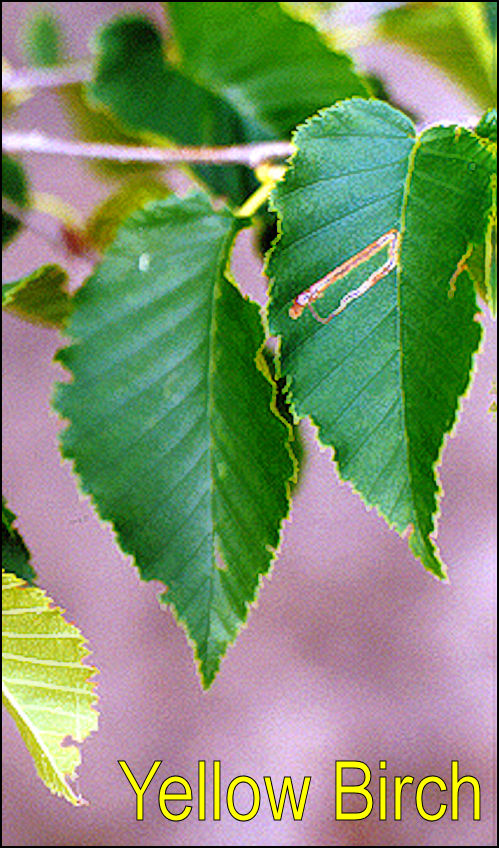
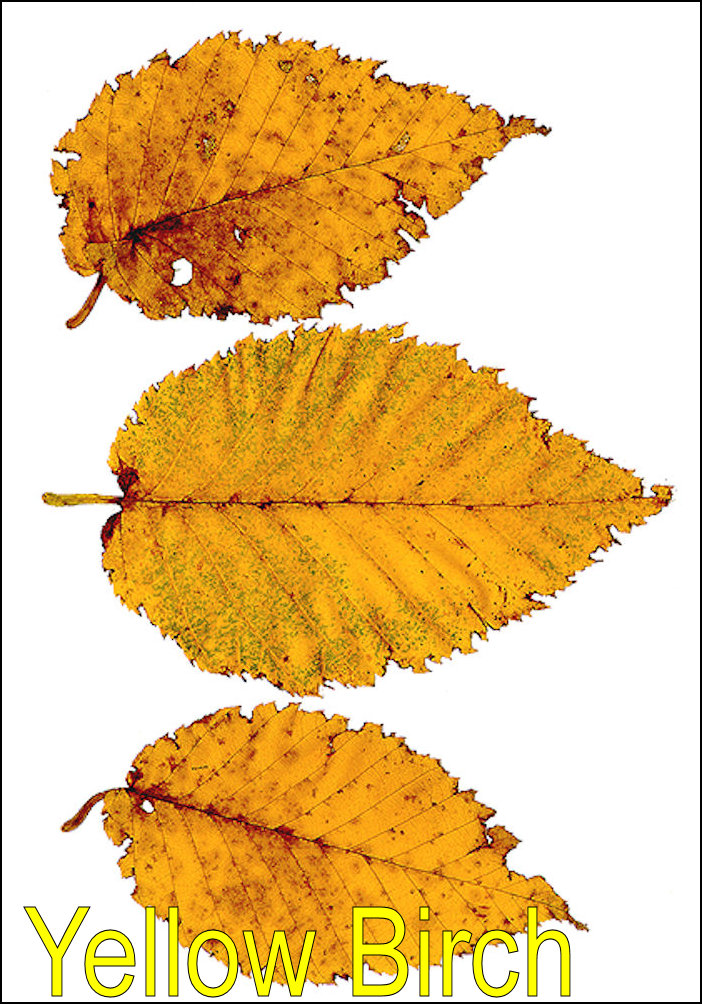
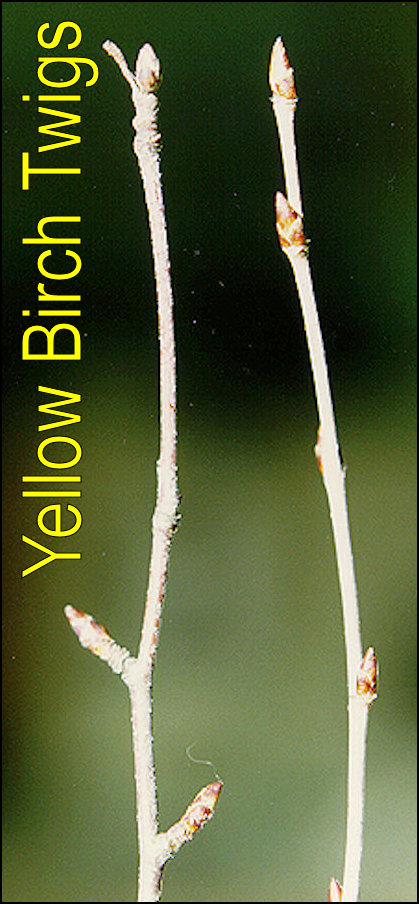
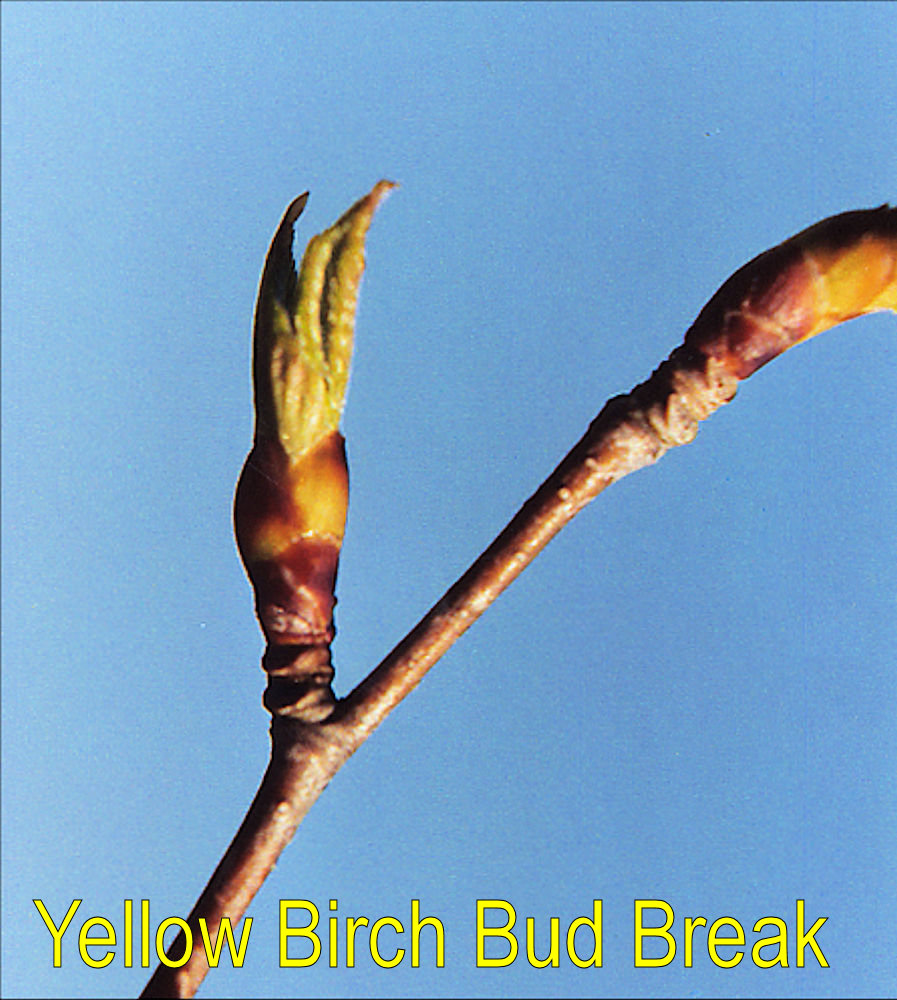
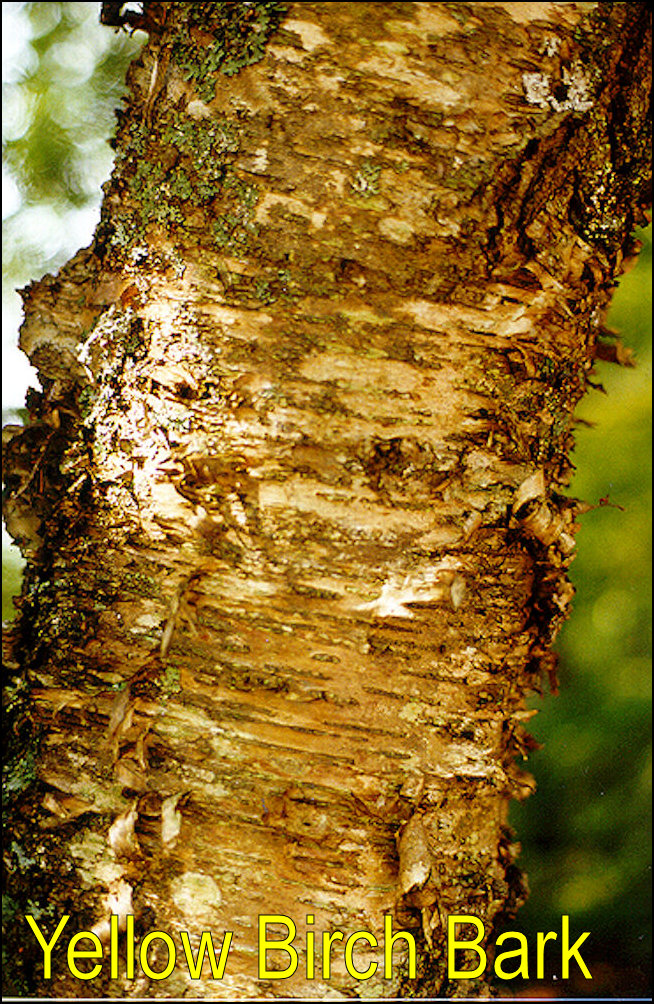
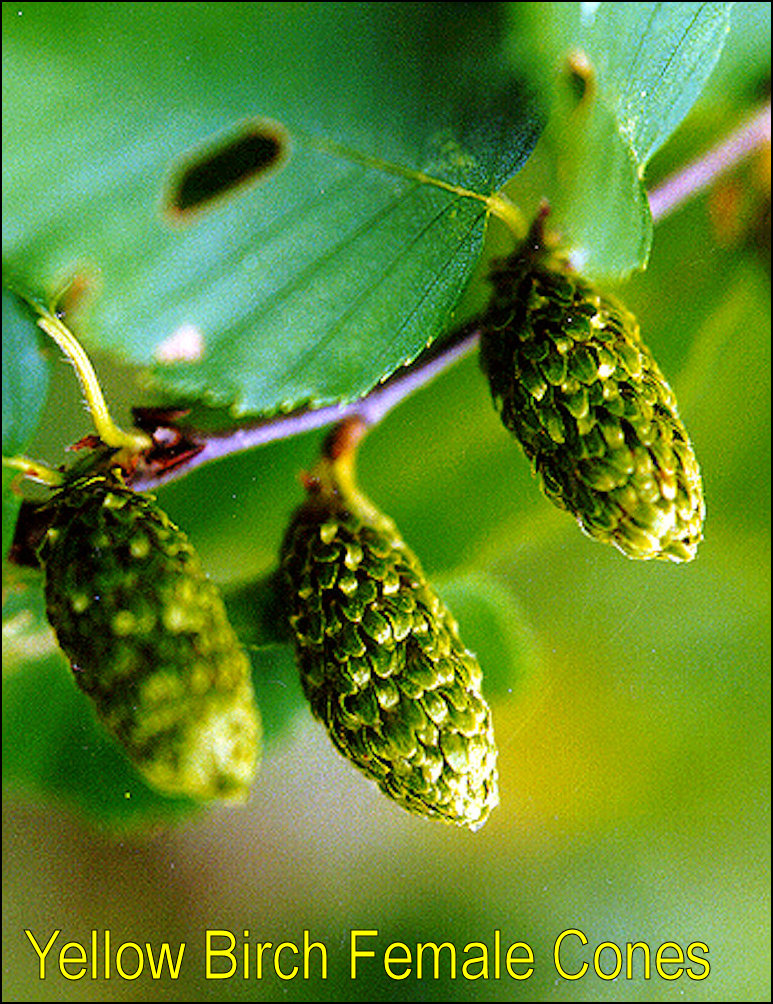
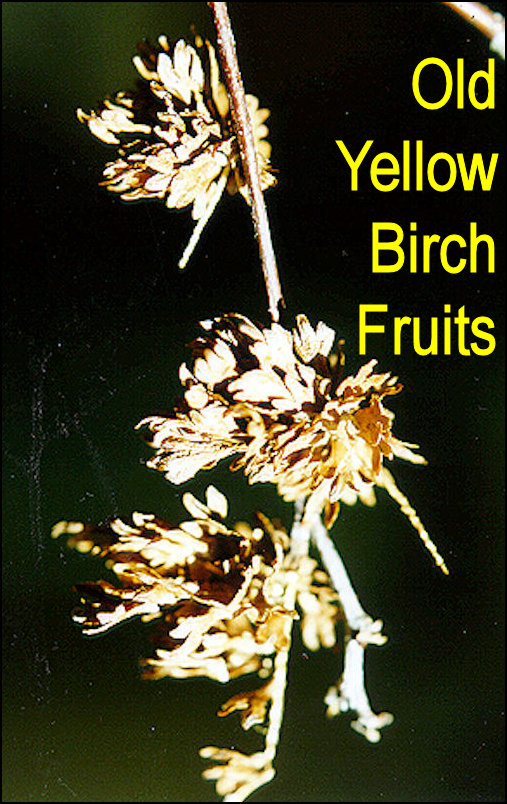
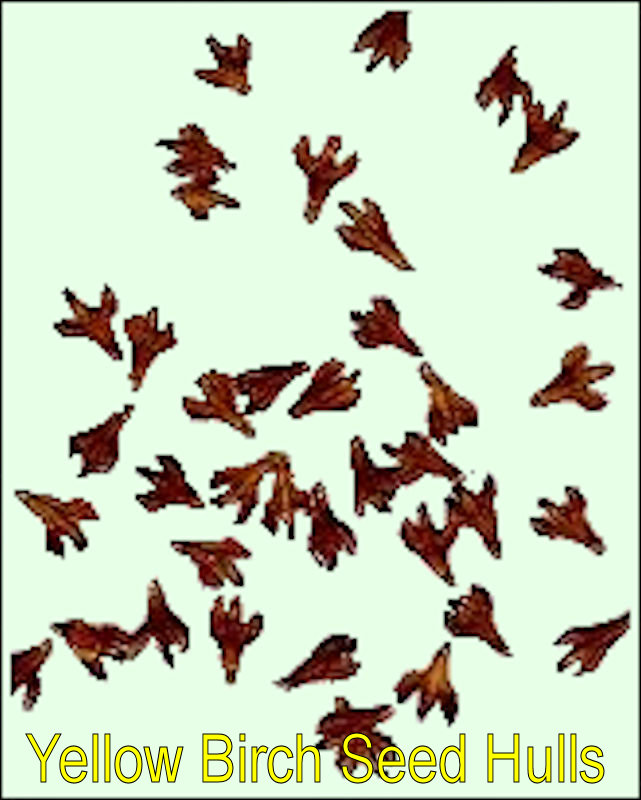
Yellow birch has the
characteristic papery BARK of birches, but peels in a more shreddy fashion. The BARK
is a bronze or shiny brown color. On large trunks, the BARK forms large
plates. LEAVES are 3-4 inches long with double-serrate margins. Bruised
TWIGS have the smell and taste of wintergreen. The older TWIGS are brown-purple, like
paper birch, but the recent twigs are a medium gray. Male catkins are about 1 inch long, form in the
fall, and flower in the spring. Small samaras
ripen in paper cones, about 1-1.5 inches long, in the late summer. Like paper birch,
the samaras look like little turkey
feet with hairs on the margins. Yellow birch can grow to HEIGHTS of 80 feet
with DIAMETERS of 2-3 feet. It is a common COMPONENT of northern hardwood stands,
especially on cooler and moister sites. Hemlock has very similar site
requirements. The Latin name in some older books is Betula lutea. Common pests: gypsy moth, leafminers, skeletonizers, tussock moths, bronze birch borer.
 IRONWOOD
(Ostrya virginiana)
IRONWOOD
(Ostrya virginiana)
Other Names:
Hophornbeam or Hornbeam
Key ID Features: Understory Habit, Bark, Leaves, Fruits
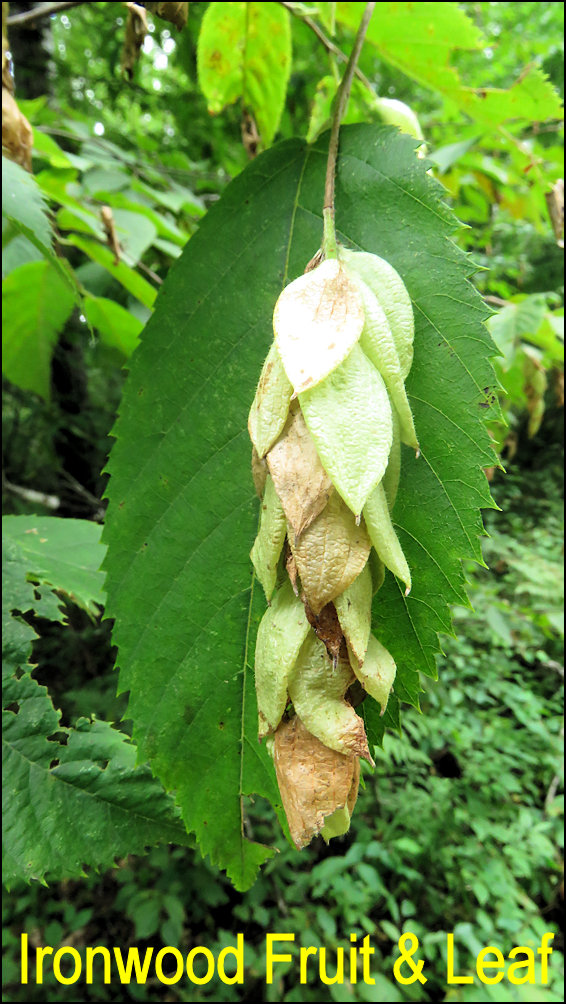
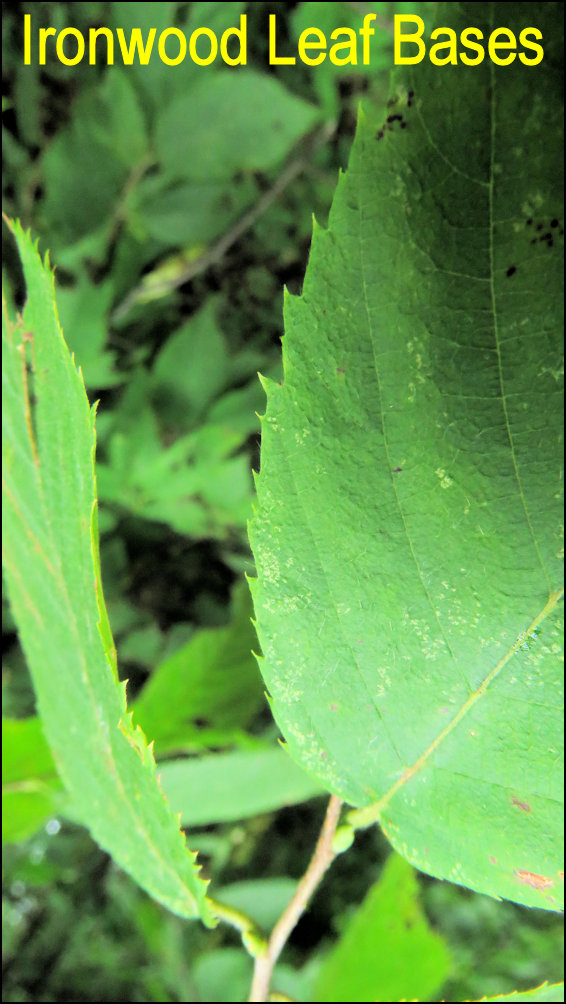
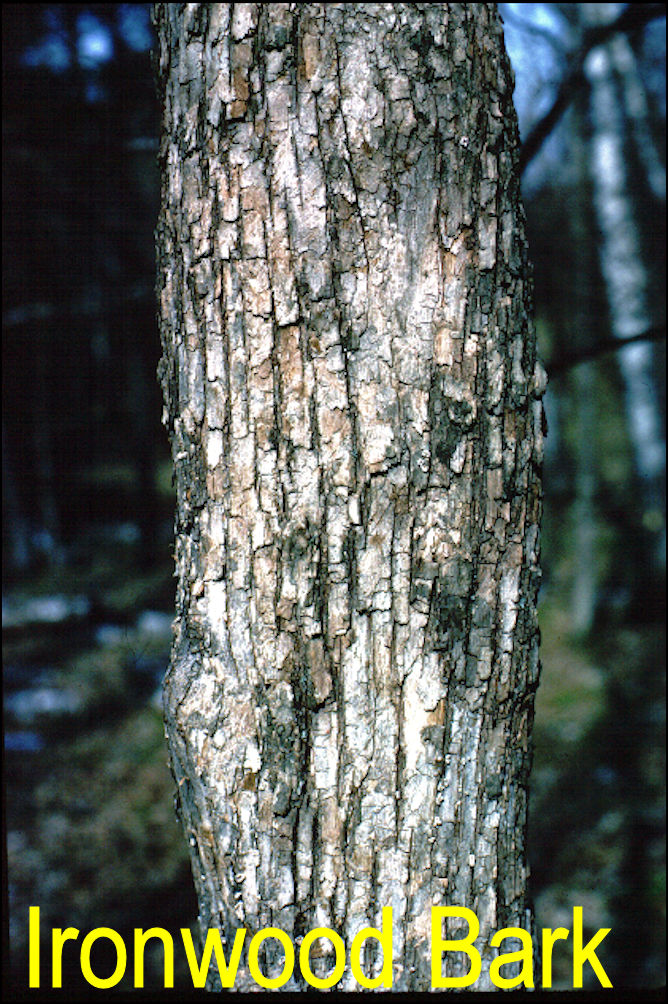
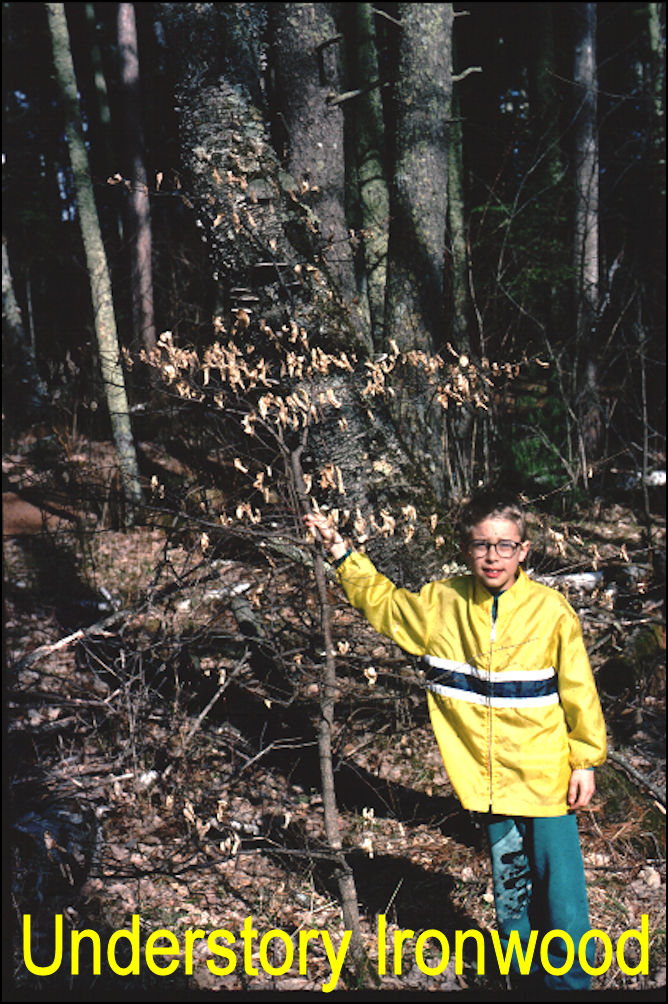
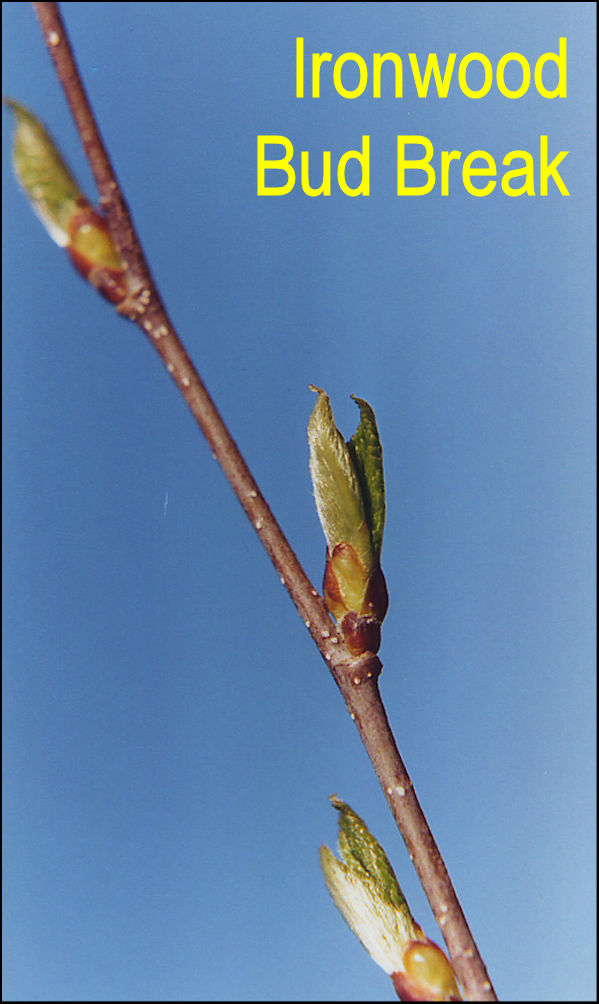
Ironwood is a small tree in
the UNDERSTORY of northern hardwoods and other upland hardwood stands. It is one of
the few species that neither cattle nor deer will browse, so is often "what is left
over" in many of our U.P. hardwood stands. The LEAVES and male catkins are like the birches. The FRUITS,
however, are much different. Nut-like seeds form inside of light-brown papery sacs
about an inch long. The BARK is very shreddy, curling away up and down the
stem. In the winter, the light-brown LEAVES often stay on the TWIGS making
identification from a distance fairly easy. The TWIGS are slender and usually a
brown color. The terminal buds
are pointy with several bud scales.
The wood is extremely hard, thus the name "ironwood."
 MUSCLEWOOD
(Carpinus caroliniana)
MUSCLEWOOD
(Carpinus caroliniana)
Other Names:
American Hornbeam, Blue Beech, or Water Beech
Key ID Features: Bark, Understory Habit, Leaves, Fruit
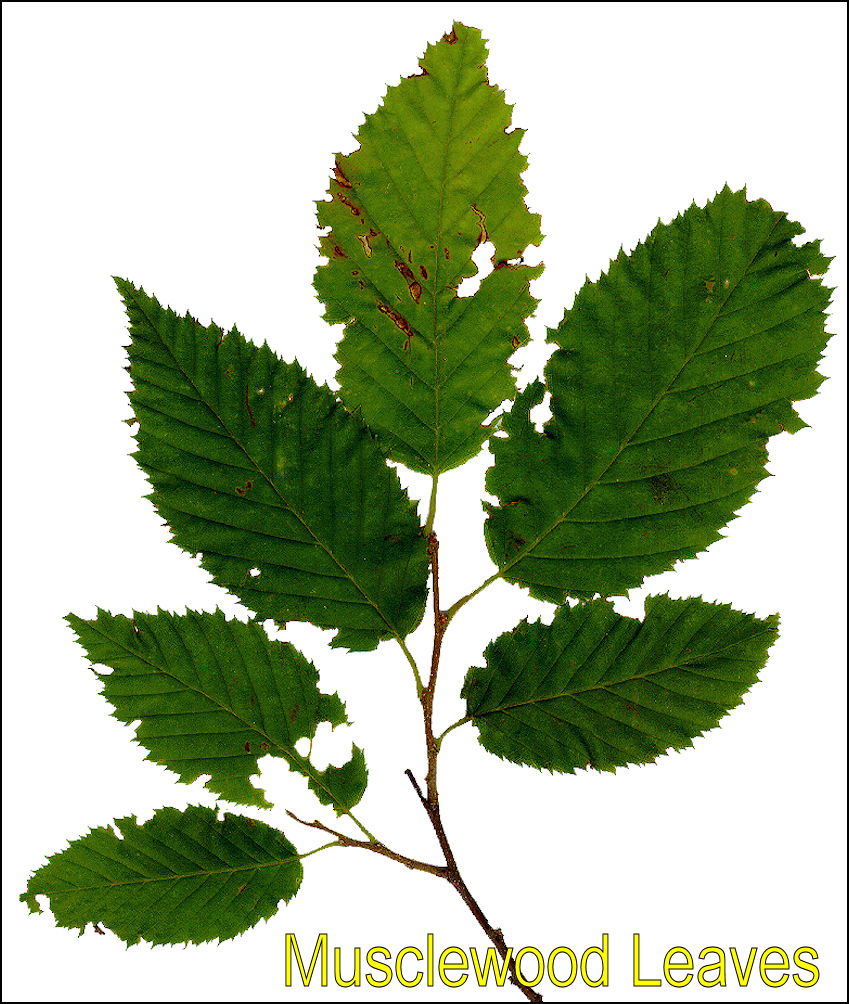
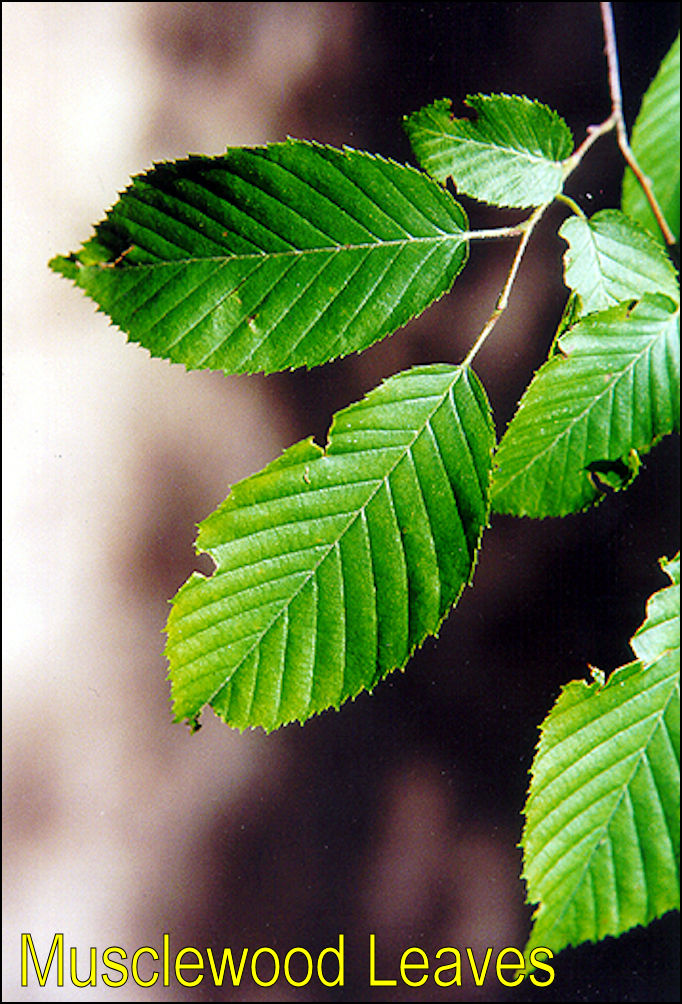

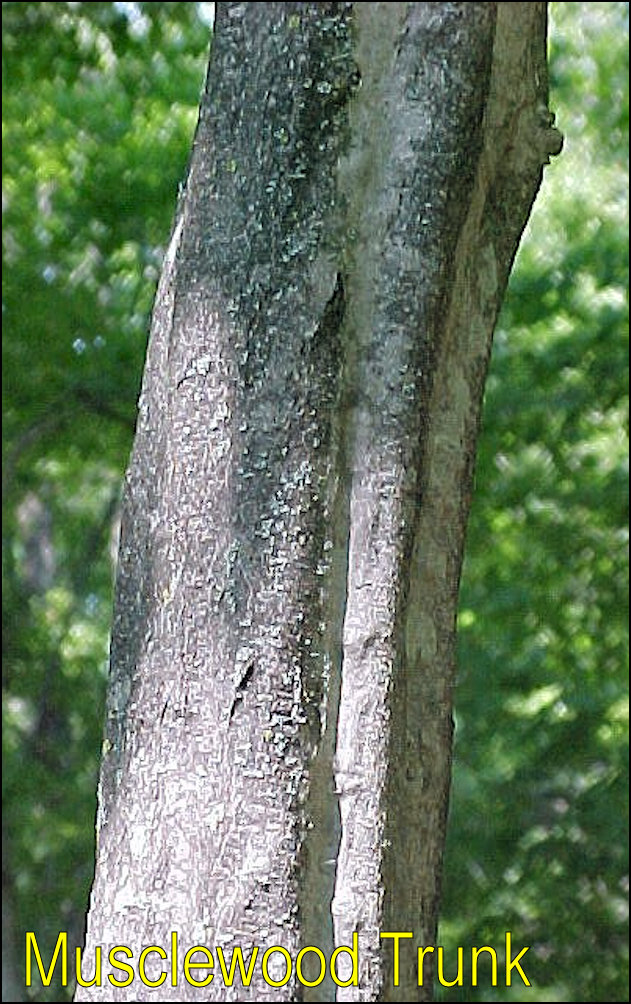
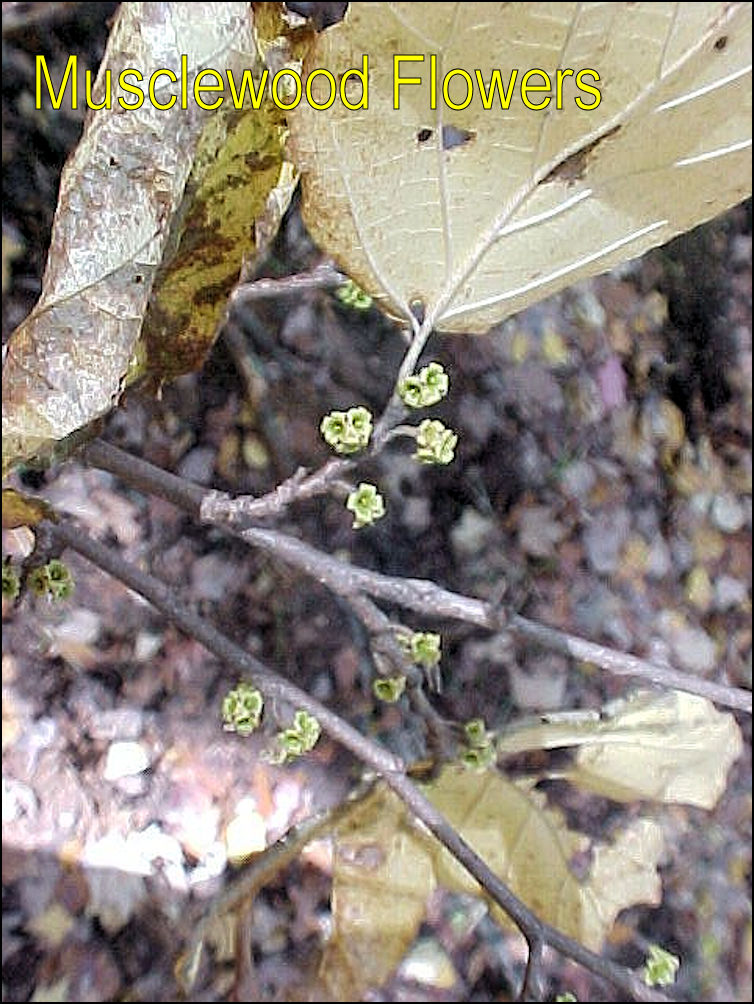
The smooth, sinewy, contoured appearance of the slate-gray TRUNK
give the appearance of a well-muscled arm or leg, hence the name. The LEAVES are
similar to the birches. The male catkins
appear in the spring only, unlike the birches and ironwood. The female catkins form interesting CLUSTERS of little
nut-like seeds, each with a 3-pointed bract. TWIGS are gray often with light
spots. Blunt BUDS may be different sizes. Musclewood is uncommon in the U.P.,
occurring on moist, rich SOILS in the understory in association with upland
hardwoods. Like ironwood, musclewood has very dense, hardwood.
Click on the blue to return the Deciduous Summer Key or the Deciduous Winter
Key.
Click HERE to return to the home page.
A note about the images on this website, click here.
This site created and maintained by Bill Cook, MSU Extension Forester for the Upper Peninsula of Michigan. Editing and modification is ongoing. Submit suggestions, questions, and corrections to cookwi@msu.edu or call 906-786-1575.